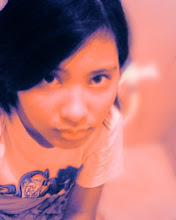Like I told you I've been exploring the world wide web for some time now. I'm more of searching artworks and interesting stuffs I find helpful to me. (this is one of the reasons aside from my addiction in making digital artworks that I miss posting in my blog for the past weeks)
As we all know there are a dozen types of formats to choose from when saving a picture. If you're fond of uploading and editing photos i'm sure you're much aware of this.
Anyways, here are some useful infos about file formats I wanna share which I found in a site (my credits to squidoo.com) which will come in handy:
Photoshop PSD
*.psdDrawbacks
This filetype wll not work with many common programs, (it will work with GIMP and - obviously - Photoshop).
The filesize is HUGE. Tip: merge all your layers before exportingAdvantages
It will preserve all your layers, if you wish to keep them (and work on them in another program).
I suspect the quality is better.
Supports transparency.
This is the only file type that will preserve your higher DPI settings (this is a bug in ArtRage).
Best for storage and editing.
TIP:You can export as a PSD and then resave it as a PNG or JPEG.
Portable Network Graphics PNG
*.png
Raster format
*approved replacement for GIFDrawbacks
This file size is quite large - smaller than PSD files, but not good for uploading, unless you are creating print files.
Does NOT preserve DPI (300 ptg will become 96 png)Advantages
Good quality, especially for lots of colours. Doesn't degrade with repeated saves. Good for exporting and using as a good quality file to create other files with.
Supports transparency.
Joint Photographic Experts Group JPEG
*.jpg, *.jpeg, *.jpe, *.jfif
Raster formatDrawbacks
Lower colour quality and the image degrades more with further editing. Also severely loses quality with repeated saves.
Again, loses DPI when exported - 300 DPI becomes 120 DPI.
Does not support transparency - any transparent pixels will become white.Advantages
Small size, so good for uploading, good for text and crisp, limited colours (usually best for photographs).
Many sites will only accepts JPEGs and GIFs for avatars and banners.
Graphics Interchange Format GIF
*.gif
Raster formatDrawbacks
Limited number of colours (256), lower quality and does not preserve DPI. Very poor at handling detailed images.Advantages
Very small, and can be animated (using multiple images and a program such as unFREEz
BITMAP BMP
*.bmp, *.dib., *.rle
Raster formatDrawbacks
Approximately ten times larger than an equivalent PNG image.
Does not support transparencyAdvantages
Very basic, and well supported file type, used in most Windows programs.
Preserves all your information (except DPI, again)
Can be compressed significanlty, as most of the data is redundant.
Tagged Image File Format - TIFF
*.tiff, *.tif,
Raster formatDrawbacks
Not supported by many programs - has many different subtypes, and most readers can only read certain ones (however, most printers will take this format now)
Not usually websupported.
Again, does not retain original DPI from the PTG fileAdvantages
Very good quality and flexibility.
Does not degrade with further editing.
Not insanely large.
Retains transparency.




No comments:
Post a Comment